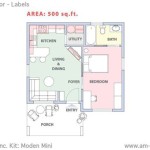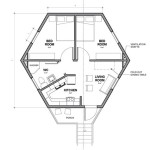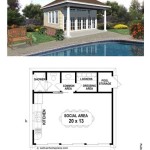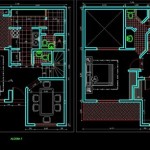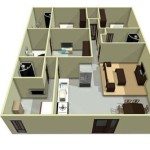Is There An App To Draw Floor Plans? Exploring Digital Solutions for Architectural Design
The creation of floor plans, traditionally a task involving manual drafting tools and significant time investment, has undergone a radical transformation with the advent of digital technology. Numerous applications now exist that empower individuals, from professional architects to homeowners, to design and visualize spaces with unprecedented ease and efficiency. These applications cater to a wide range of needs and skill levels, offering diverse features for both 2D and 3D plan creation.
The question, "Is there an app to draw floor plans?" can be definitively answered with a resounding yes. However, the subsequent question becomes: "Which app best suits specific needs and requirements?" The market is saturated with options, each boasting unique strengths and weaknesses. Understanding the capabilities and limitations of these applications is crucial for selecting the optimal tool for a particular project.
Key Point 1: Categorizing Floor Plan Apps
To effectively navigate the landscape of floor plan applications, they can be broadly categorized based on their primary functionality and target audience. This categorization helps in narrowing down the options and selecting an app that aligns with the user's skill level, project complexity, and budget.
Firstly, there are apps targeted towards professional architects and interior designers. These applications often offer advanced features such as precise measurement tools, detailed material libraries, compatibility with CAD software, and the ability to generate construction documents. Examples include AutoCAD Architecture (mobile version), ArchiCAD (BIMx), and Chief Architect Premier.
Secondly, there are apps designed for homeowners and individuals undertaking DIY renovation projects. These applications typically prioritize ease of use and intuitive interfaces, focusing on basic floor plan creation, furniture placement, and visualization. Examples include RoomSketcher, Floor Plan Creator, and Planner 5D. These apps often incorporate drag-and-drop functionality and pre-designed elements to simplify the design process.
Thirdly, there are apps specifically designed for real estate professionals. These applications often emphasize creating visually appealing floor plans for marketing purposes, incorporating features such as 3D rendering, virtual tours, and integration with real estate platforms. Examples include Magicplan and Matterport (though Matterport focuses primarily on 3D scanning and virtual tours, it can be used to generate floor plans from scans).
Finally, some apps focus on providing floor plans from existing properties. These may integrate with specialized laser measurement tools and allow users to quickly create floor plans simply by walking through the property and capturing the measurements with their mobile device. These usually require added devices and subscriptions to allow automated floor plan creation.
Key Point 2: Essential Features and Functionality
Regardless of the target audience, several essential features define the utility and effectiveness of a floor plan application. These features contribute to the accuracy, efficiency, and overall usability of the app.
Precise measurement tools are paramount. The ability to accurately input and manipulate dimensions is crucial for creating realistic and functional floor plans. Apps that support various measurement units (e.g., feet, inches, meters) and allow for easy adjustment of wall lengths and angles are highly desirable.
Extensive object libraries simplify the process of furnishing and decorating the floor plan. These libraries should include a wide range of furniture, fixtures, and appliances, allowing users to visualize the layout and functionality of the space. The ability to customize these objects (e.g., change colors, materials, dimensions) further enhances the app's versatility.
Layering capabilities are essential for managing complex floor plans. Layers allow users to organize different elements of the plan (e.g., walls, furniture, electrical wiring) into separate groups, making it easier to edit and manipulate individual components without affecting other parts of the design. This is particularly useful for managing complex projects with multiple levels or overlapping elements.
3D visualization is increasingly becoming a standard feature in floor plan applications. The ability to view the floor plan in three dimensions provides a more realistic and immersive representation of the space, allowing users to better understand the layout, proportions, and overall aesthetic. Some apps even offer virtual reality integration, allowing users to "walk through" the floor plan using a VR headset.
Cloud synchronization and collaboration features enable users to access their floor plans from multiple devices and collaborate with others on the design process. This is particularly useful for teams working on larger projects or for individuals who want to access their plans while on the go. Cloud synchronization also provides a backup of the floor plans, protecting against data loss.
The ability to import and export floor plans in various file formats (e.g., DWG, DXF, PDF) is crucial for compatibility with other design software and for sharing plans with contractors, clients, or other stakeholders. This ensures that the floor plan can be easily integrated into the overall project workflow.
Key Point 3: Factors to Consider When Choosing an App
Selecting the right floor plan application requires careful consideration of several factors, including the user's skill level, project complexity, budget, and desired features. Evaluating these factors will help narrow down the options and identify the app that best meets specific needs.
User Skill Level: For individuals with limited experience in architectural design, a user-friendly app with an intuitive interface and extensive tutorials is essential. Apps with drag-and-drop functionality and pre-designed elements can greatly simplify the design process. Conversely, experienced architects and designers may prefer apps with advanced features and greater customization options.
Project Complexity: The complexity of the project will dictate the required features and functionality. For simple floor plans, a basic app with essential measurement tools and object libraries may suffice. However, for more complex projects with multiple levels, intricate details, and specialized requirements, a more advanced app with layering capabilities, 3D visualization, and compatibility with CAD software may be necessary.
Budget: Floor plan applications range in price from free to hundreds of dollars per month. Free apps typically offer limited features and may contain advertisements. Paid apps offer a wider range of features and often provide a more professional user experience. Subscription-based apps typically provide access to the latest features and ongoing support, while one-time purchase apps offer a permanent license to a specific version of the software.
Operating System Compatibility: Ensure that the chosen app is compatible with the user's operating system (e.g., iOS, Android, Windows, macOS). Some apps are only available for specific platforms, while others offer cross-platform compatibility. Consider whether the user primarily works on a desktop computer, a tablet, or a smartphone, and choose an app that is optimized for the preferred device.
Reviews and Ratings: Before committing to a particular app, it is advisable to read reviews and ratings from other users. These reviews can provide valuable insights into the app's usability, reliability, and customer support. Pay attention to both positive and negative reviews to get a balanced perspective.
Availability of Tutorials and Support: A comprehensive library of tutorials and readily available customer support can be invaluable for new users. Look for apps that offer video tutorials, detailed documentation, and responsive customer support channels (e.g., email, phone, online forums). This will help users quickly learn the app's features and resolve any issues that may arise.
Ultimately, the selection of a floor plan application is a deeply personal choice. By carefully considering the aforementioned factors and thoroughly researching the available options, any individual can find an application that empowers them to effectively create and visualize their ideal spaces.

Draw Floor Plans With The Roomsketcher App
Floor Plan Creator On Google Play

Draw Floor Plans With The Roomsketcher App

Roomsketcher App

20 Best Floor Plan To Create Your Plans Foyr
Floor Plan Creator On Google Play

11 Best Free Floor Plan For 2024

Draw Floor Plans With The Roomsketcher App
House Plan Drawing App On Google Play

Floor Plan App Live Home 3d

